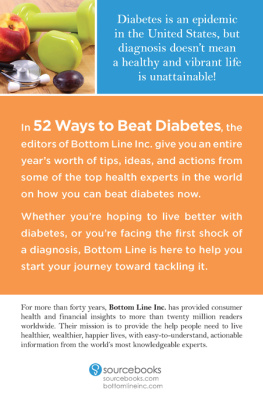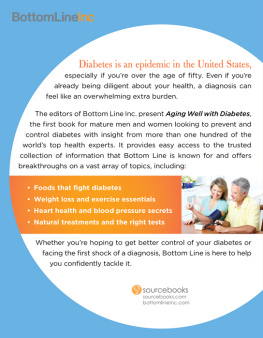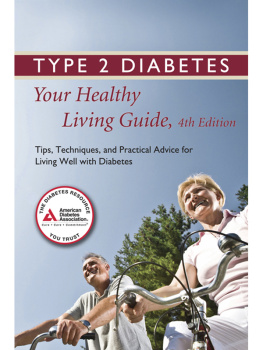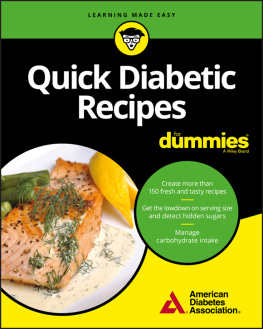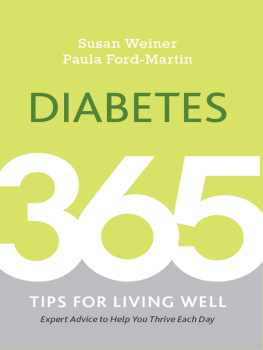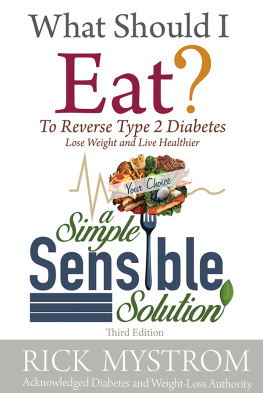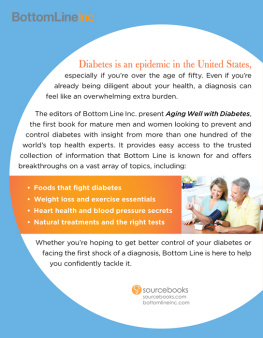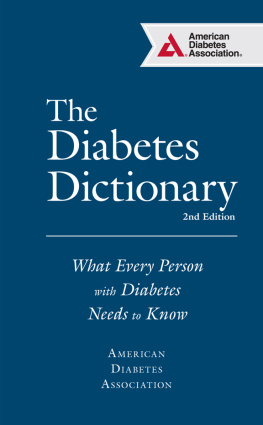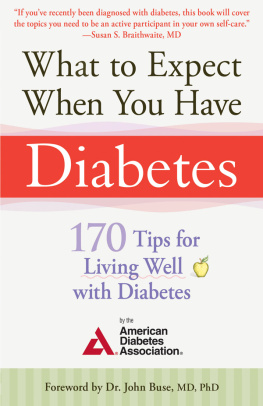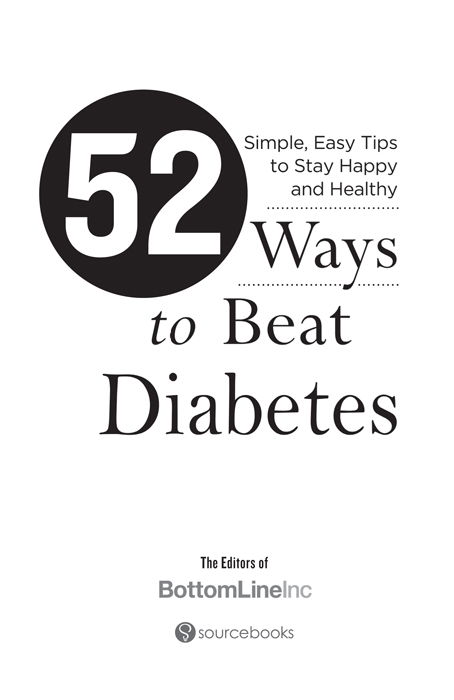Copyright 2017 by Bottom Line Inc.
Cover and internal design 2017 by Sourcebooks, Inc.
Cover design by The Book Designers
Cover images ratmaner/Shutterstock
Sourcebooks and the colophon are registered trademarks of Sourcebooks, Inc.
All rights reserved. No part of this book may be reproduced in any form or by any electronic or mechanical means including information storage and retrieval systemsexcept in the case of brief quotations embodied in critical articles or reviewswithout permission in writing from its publisher, Sourcebooks, Inc.
This publication is designed to provide accurate and authoritative information in regard to the subject matter covered. It is sold with the understanding that the publisher is not engaged in rendering legal, accounting, or other professional service. If legal advice or other expert assistance is required, the services of a competent professional person should be sought. From a Declaration of Principles Jointly Adopted by a Committee of the American Bar Association and a Committee of Publishers and Associations
This book is not intended as a substitute for medical advice from a qualified physician. The intent of this book is to provide accurate general information in regard to the subject matter covered. If medical advice or other expert help is needed, the services of an appropriate medical professional should be sought.
All brand names and product names used in this book are trademarks, registered trademarks, or trade names of their respective holders. Sourcebooks, Inc., is not associated with any product or vendor in this book.
Published by Sourcebooks, Inc.
P.O. Box 4410, Naperville, Illinois 60567-4410
(630) 961-3900
Fax: (630) 961-2168
www.sourcebooks.com
This edition issued based on the hardcover of Beat Diabetes Now! , published in 2016 in the United States by Bottom Line Inc. Published by arrangement with Bottom Line Inc., Stamford, CT. www.BottomLineInc.com.
Library of Congress Cataloging-in-Publication Data
Names: Bottom Line Books (Firm)
Title: 52 ways to beat diabetes: simple, easy tips to stay happy and healthy.
Other titles: Fifty two ways to beat diabetes now
Description: Naperville, Illinois : Bottom Line, Inc., Sourcebooks, [2017]
Identifiers: LCCN 2017002559 | (pbk. : alk. paper)
Subjects: LCSH: Diabetes--Popular works. | Diabetes--Treatment--Popular works. | Diabetes--Diet therapy--Popular works.
Classification: LCC RC660.4 .A144 2017 | DDC 616.4/62--dc23 LC record available at https://lccn.loc.gov/2017002559
Table of Contents
Preface
We are proud to bring to you Bottom Lines 52 Ways to Beat Diabetes . This small but essential volume features a potent selection of trustworthy and actionable advice from our bestselling book Beat Diabetes Now! Each article is specially chosen for readers at the start of their journey with type 2 diabetes and prediabetes, conditions that have become epidemic in this country.
Bottom Lines books are a result of ongoing research and connection with thousands of experts in top clinics, research centers, and premier medical institutes and journals around the world. We trust that you will glean new, helpful, and actionable information about living a healthy, diabetes-free life.
As a reader of a Bottom Line book, please be assured that you are receiving well-researched information from a trusted source. But please use prudence in health matters. Always speak to your physician before taking vitamins, supplements, or over-the-counter medication, stopping a prescribed medication, changing your diet, or beginning an exercise program. If you experience side effects from any regimen, contact your doctor immediately.
Be well,
The Editors, Bottom Line Inc.
Stamford, Connecticut
What Is Diabetes?
Whenever we eat or drink, the food or liquid we ingest is broken down into nutrients that our bodies need to function. Glucose (a simple sugar that acts as the main energy source for our bodies) is one of the key nutrients. When glucose is absorbed into the bloodstream, it stimulates the pancreas to produce insulin. This hormone transports glucose into our bodys cells, where it is then converted to energy for immediate or later use.
There are two main types of diabetes.
Type 1 (formerly known as juvenile-onset) diabetes affects only about 10 percent of people with diabetes. Although the disorder usually develops in childhood or early adulthood (before age thirty), an increasing number of adults are now being affected.
Researchers theorize that the increasing incidence of obesity in adults may accelerate the autoimmune destruction that characterizes type 1 diabetesspecifically, the bodys immune system attacks and destroys the insulin-producing cells of the pancreas.
People with type 1 diabetes need frequent doses of insulin, which is typically delivered by injection with thin needles, a pen that contains an insulin-filled cartridge, or a small special pump that delivers a continuous dose of insulin.
Type 2 (once known as adult-onset) diabetes affects 90 percent of people who suffer from the disease. Most cases occur during adulthood, and risk increases with age. In recent years, many overweight children and teenagers have been diagnosed with type 2 diabetes.
In type 2 diabetes, the pancreas produces insulin (sometimes more than the usual amounts), but fat and tissue cells are resistant, preventing the hormone from doing what its supposed to dowhich is to unlock cells so that blood glucose can enter.
Your risk of type 2 diabetes increases significantly if you eat a lot of foods that are high in simple carbohydrates (which are rapidly transformed into sugar) and foods that are low in dietary fiber (needed to slow the absorption of sugars from the food we eat and digest). Also, people who dont get much exercise are more likely to develop type 2 diabetes because of the insulin resistance that results from weight gain and an imbalance of stress hormones.
In addition to obesity, risk factors for type 2 diabetes include a family history of the disease (especially in parents or siblings), apple-shaped body type, high blood pressure, high cholesterol, or, among women, a history of diabetes during pregnancy (gestational diabetes, which usually disappears after delivery). People with type 2 diabetes who have difficulty controlling their glucose levels may require oral medication, such as metformin (Glucophage) and/or insulin injections.
Mark A. Stengler, NMD, a naturopathic medical doctor and leading authority on the practice of alternative and integrated medicine. Dr. Stengler is author of the Health Revelations newsletter, author of The Natural Physicians Healing Therapies , founder and medical director of the Stengler Center for Integrative Medicine in Encinitas, California, and former adjunct associate clinical professor at the National College of Natural Medicine in Portland, Oregon. MarkStengler.com.
What Is Prediabetes?
Prediabetes occurs when the bodys cells no longer respond correctly to insulin, a hormone that regulates blood sugar. With prediabetes, blood-sugar levels are higher than normal but not high enough to warrant a diagnosis of diabetes.
Prediabetes affects about fifty-seven million Americansmost of whom are unaware that they have the condition.
The late Frederic J. Vagnini, MD, a cardiovascular surgeon and medical director of the Heart, Diabetes & Weight Loss Centers of New York in New Hyde Park. He was the author of The Weight Loss Plan for Beating Diabetes .

